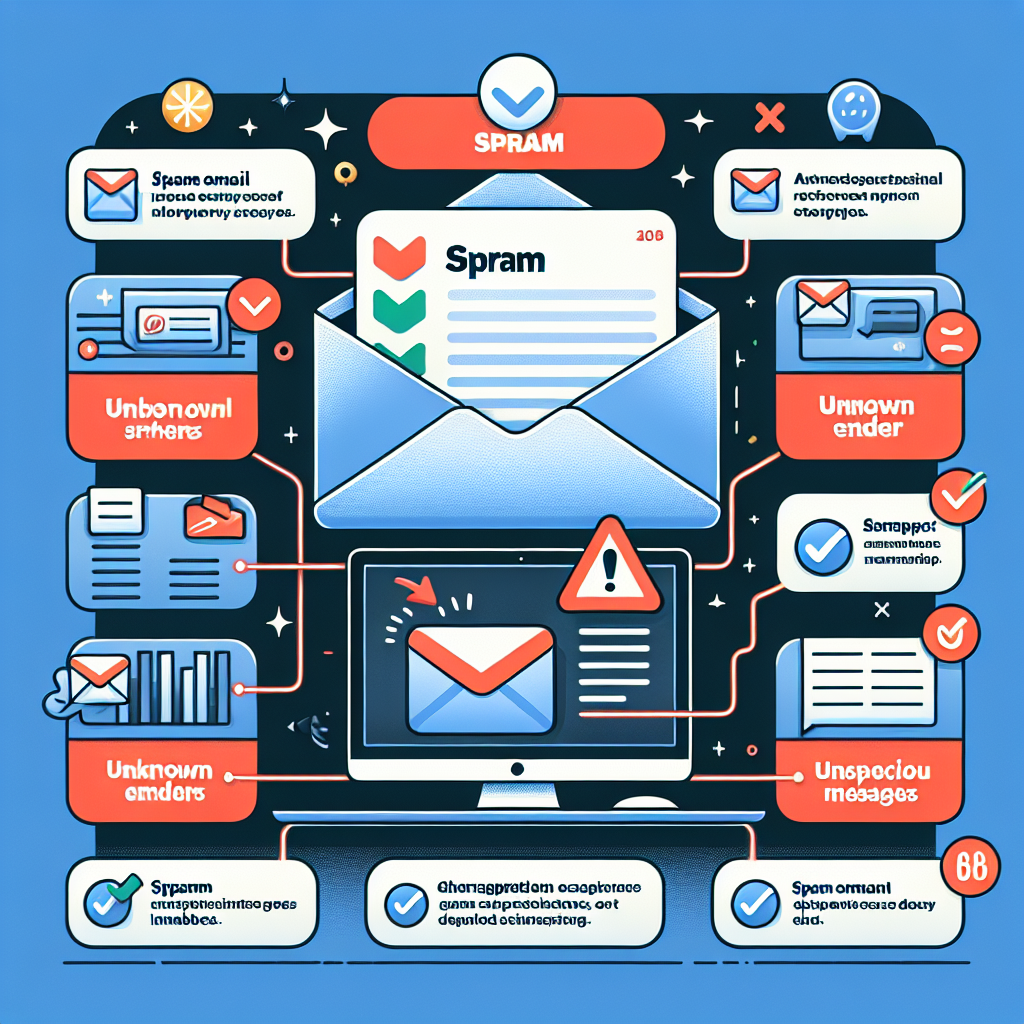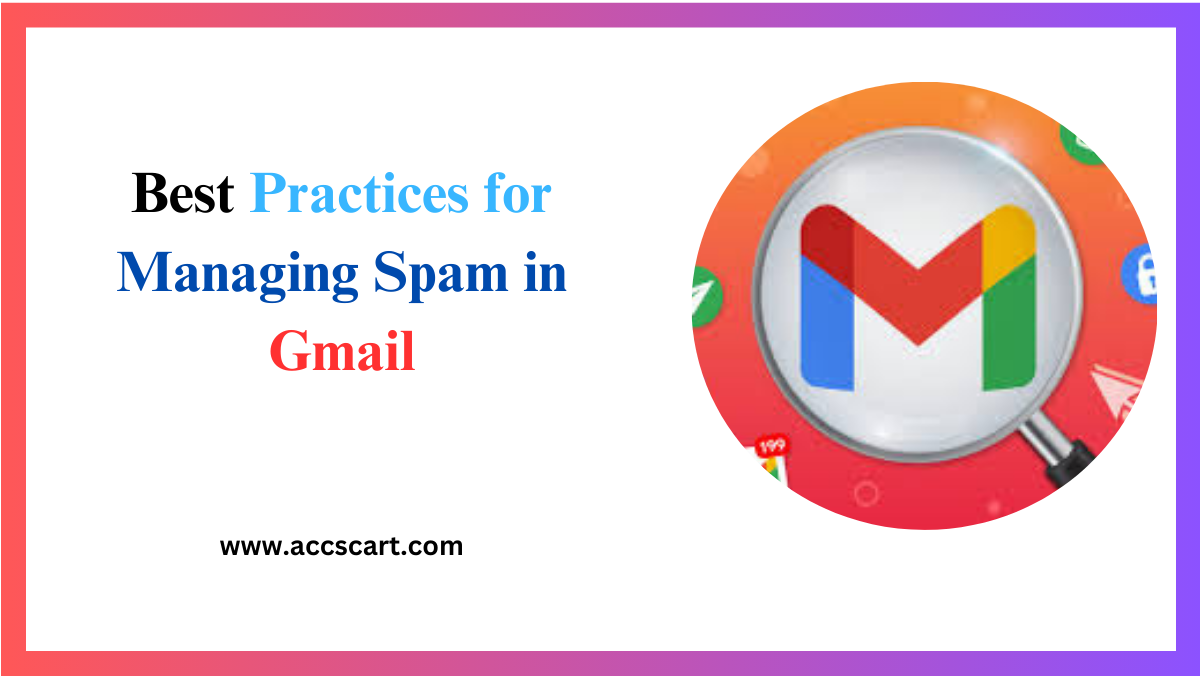In today’s digital world, our email inboxes are constantly under siege by spam. Whether it’s unsolicited marketing emails or phishing Spam in Gmail, managing spam can be a daunting task. But fear not! This guide will help you master the art of spam management in Gmail, ensuring your inbox remains clutter-free and secure.
Understanding Spam Filters
Spam filters are the first line of defense against unwanted emails. These filters use complex algorithms to identify and block Spam in Gmail before it reaches your inbox. But how do they work?
1. The Basics of Spam Filters
Spam filters analyze incoming emails based on specific criteria. This includes the sender’s reputation, the email’s content, and any suspicious attachments. If an email meets the criteria for Spam in Gmail, it’s automatically moved to the spam folder.
2. Types of Spam Filters
There are two main types of spam filters:
- Content-Based Filters: These filters analyze the content of an Spam in Gmail, looking for keywords and phrases commonly used in spam. For example, emails containing phrases like “buy social media accounts” or “buy Gmail accounts” are likely to be flagged as spam.
- Behavior-Based Filters: These filters analyze the sender’s behavior. If a sender repeatedly sends emails to addresses that don’t exist or receives a high number of spam reports, their emails are likely to be marked as spam.
3. The Role of User Feedback
User feedback is crucial for improving spam filters. When you mark an Spam in Gmail, it helps the filter learn and become more accurate. Conversely, when you mark an email as “Not Spam,” it helps the filter recognize legitimate emails.

How Spam Filters Work
Spam filters are more than just keyword detectors. They use sophisticated techniques to identify spam and ensure your inbox remains clean.
- Content Analysis
Spam filters analyze the content of an email to determine if it’s spam. This includes checking for suspicious links, attachments, and common spam phrases like “purchase Gmail accounts.” The filter also checks the email’s formatting, as many spam emails have poor formatting or use excessive HTML.
- Sender Reputation
The sender’s reputation plays a significant role in spam detection. If a sender has a history of sending spam, their Spam in Gmail are more likely to be flagged. Spam filters use various metrics to determine a sender’s reputation, including the number of spam reports and bounce rates.
- Machine Learning
Modern spam filters use machine learning to improve their accuracy. These filters learn from user feedback and adapt to new spam techniques. This means the more you interact with your spam filter, the better it becomes at identifying spam.
Reporting Spam Emails
Reporting spam emails is a crucial step in managing sSpam in Gmail. It helps improve spam filters and protect other users from unwanted emails.
- How to Report Spam in Gmail
Reporting spam in Gmail is easy. Simply open the email, click on the “Report spam” button, and Gmail will move the email to your spam folder. This action also sends feedback to Google’s spam filter, helping it learn and improve.
- The Importance of Reporting Spam
Reporting spam not only cleans your inbox but also helps improve spam filters for everyone. When you report spam, it sends feedback to the spam filter, helping it learn and adapt. This means fewer spam emails for you and other users.
- What Happens After You Report Spam
Once you report an email as spam, it’s moved to your spam folder. Spam in Gmail spam filter also receives feedback and uses it to improve its accuracy. Over time, this helps reduce the number of spam emails that reach your inbox.
Preventing Spam Sign-Ups
Preventing spam sign-ups is essential for keeping your inbox clean. By taking a few precautions, you can reduce the number of spam emails you receive.
- Use a Secondary Email Address
One of the best ways to prevent spam sign-ups is to use a secondary email address for online registrations. This way, if your email address is sold or shared, the spam emails won’t reach your primary inbox.
- Be Cautious with Your Email Address
Be cautious about where you share your email address. Avoid sharing it on public forums or websites that don’t have a privacy policy. If you must share your email address, consider using a disposable email address.
- Use Spam Filtering Services
Spam filtering services can help prevent spam sign-ups. These services analyze incoming emails and block those that meet the criteria for spam. Some popular spam filtering services include MailWasher, SpamAssassin, and SpamTitan.
Regularly Checking Spam Folder
Regularly checking your spam folder is essential for ensuring legitimate emails aren’t accidentally marked as spam. Here’s how to do it effectively.
- Why Check Your Spam Folder
Sometimes, legitimate emails can end up in your spam in Gmail folder. This can happen if the email contains certain keywords or if the sender’s reputation is questionable. Regularly checking your spam folder ensures you don’t miss important emails.
- How to Check Your Spam Folder in Gmail
Checking your spam folder in Gmail is simple. Open your Gmail account, click on the “Spam” folder, and review the emails. If you find a legitimate Spam in Gmaill, mark it as “Not Spam” to move it back to your inbox.
- What to Do with Legitimate Emails in Spam
If you find a legitimate email in your spam folder, mark it as “Not Spam.” This action moves the email back to your inbox and sends feedback to the spam filter, helping it learn and improve.
Managing Spam Effectively
Managing spam effectively requires a combination of good practices and tools. Here are some tips to help you keep your inbox clean.
- Use Strong Spam Filters
Strong spam filters are essential for managing spam. Make sure your email provider has robust spam filters in place. If not, consider using a third-party spam filtering service.
- Be Cautious with Attachments and Links
Spam emails often contain malicious attachments and links. Be cautious about opening attachments and clicking on links from unknown senders. If in doubt, verify the sender’s identity before taking any action.
- Educate Yourself About Phishing Scams
Phishing scams are a common type of spam. Educate yourself about the warning signs of phishing scams, such as urgent requests for personal information and suspicious links. Awareness is the first step in protecting yourself from these scams.
Advanced Spam Management Techniques
For those who want to take their spam management to the next level, Spam in Gmail here are some advanced techniques.
- Use Email Filtering Rules
Email filtering rules allow you to automatically sort and manage incoming emails. You can create rules to move emails from specific senders or with certain keywords to your spam folder. This helps keep your inbox clean and organized.
- Enable Two-Factor Authentication
Two-factor authentication adds an extra layer of security to your email account. By requiring a second form of verification, such as a text message code, you can protect your account from unauthorized access and reduce the risk of spam.
- Regularly Update Your Email Security Settings
Regularly updating your email security settings helps protect your account from spam and other threats. Make sure your email provider’s security settings are up to date and enable any additional security features they offer.
Conclusion
Managing spam in Gmail doesn’t have to be a daunting task. By understanding how spam filters work, reporting spam emails, and taking precautions to prevent spam sign-ups, you can keep your inbox clean and secure. Regularly checking your spam folder and using advanced spam management techniques can further enhance your email experience.
Take control of your email today and say goodbye to spam! For more tips on email management and security, subscribe to our newsletter or check out our other blog posts









